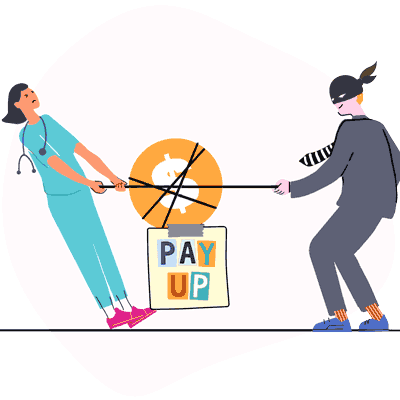No Response to Second Review Request? A Lien Is the Only Option

A recent refusal by Travelers Insurance to respond to a provider’s second review appeal, and subsequent denial of the provider’s request for Independent Bill Review (IBR), perfectly illustrate significant flaws in California’s process for disputing incorrectly denied or adjusted workers’ comp bills.
Travelers ignored the provider’s second review appeal, and subsequently the provider’s IBR request was denied on the grounds the provider failed to submit Travelers’ (non-existent) response to that second review appeal. In effect, Travelers brought the appeal process to a halt simply by refusing to participate.
Fortunately, there is a recourse. Unfortunately, it means even further hassle for the provider.
Travelers’ Non-Compliance
After receiving the Explanation of Review (EOR) in response to the original bill, the provider disputed the amount Travelers agreed to pay. Following the established procedure, the provider made a compliant request for second bill review within the 90-day time limit. At that point, Travelers had 14 days to return a final EOR after conducting second review.
But 14 days later, not a peep from Travelers.
The provider reached out to Travelers by phone repeatedly, with no response. Seeing no other option, the provider escalated the dispute, submitting a request for IBR to Maximus, the entity contracted by California’s Division of Workers’ Compensation (DWC) to conduct IBR.
Subsequently, the provider got a letter from the DWC, explaining that:
...the filing of a request for Independent Bill Review will include a copy of the explanation of review that accompanied the claim’s administrator’s response to the original bill and a copy of the final written determination of the second review (explanation of review) issued by the claims administrator to the provider.
While the above is certainly true, it doesn’t address the matter at hand. No “final written determination of the second review (explanation of review)” was ever “issued by the claims administrator to the provider.” So what’s a provider to do?
Lien In
The provider should file a lien with the Workers’ Compensation Appeals Board (WCAB). The moment the deadline for a final EOR passed with no response from the claims administrator, the amount owed ceased to be the sole issue at hand. The DWC established the IBR process strictly to relieve the WCAB of disputes that concern only the reimbursement amount, so the Board could focus on “threshold” issues like liability.
Fortunately for the provider in question, it is still possible to file a lien. The provider may yet recover full reimbursement, in addition to any penalties the WCAB sees fit to impose (including potential restitution of the $195 IBR filing fee the provider paid upon submitting the IBR request).
Unfortunately, resolving a dispute via lien is a much more cumbersome and time-consuming process. It could take years before the provider sees full compensation.
That a claims administrator can so easily force reimbursement-only disputes into the WCAB’s purview completely negates the purpose of IBR. It’s a major flaw in the system, one that could be exploited by the more unscrupulous payors. Non-compliance with appeals, in our view, should result in a default victory for the provider to avoid exactly this kind of needless friction.
When it comes to reimbursement, claims administrators don’t always get it right. Fortunately, DaisyBill does. Our Billing Software makes billing and appeals easier and faster than ever. Schedule a free demonstration today.
SCHEDULE DEMO
DaisyBill provides content as an insightful service to its readers and clients. It does not offer legal advice and cannot guarantee the accuracy or suitability of its content for a particular purpose.




